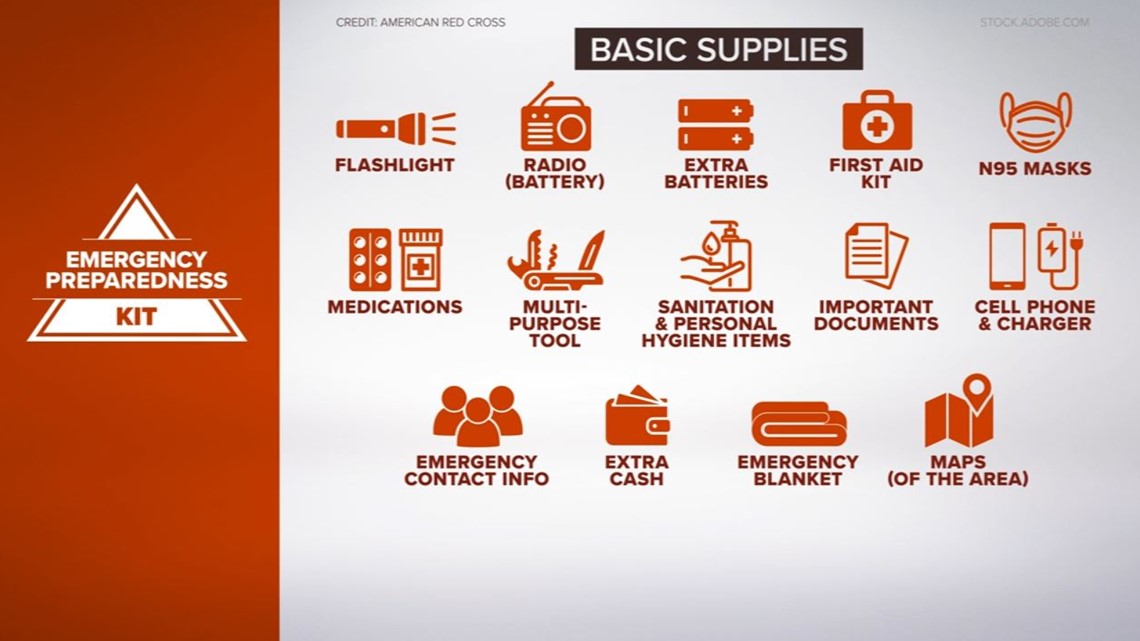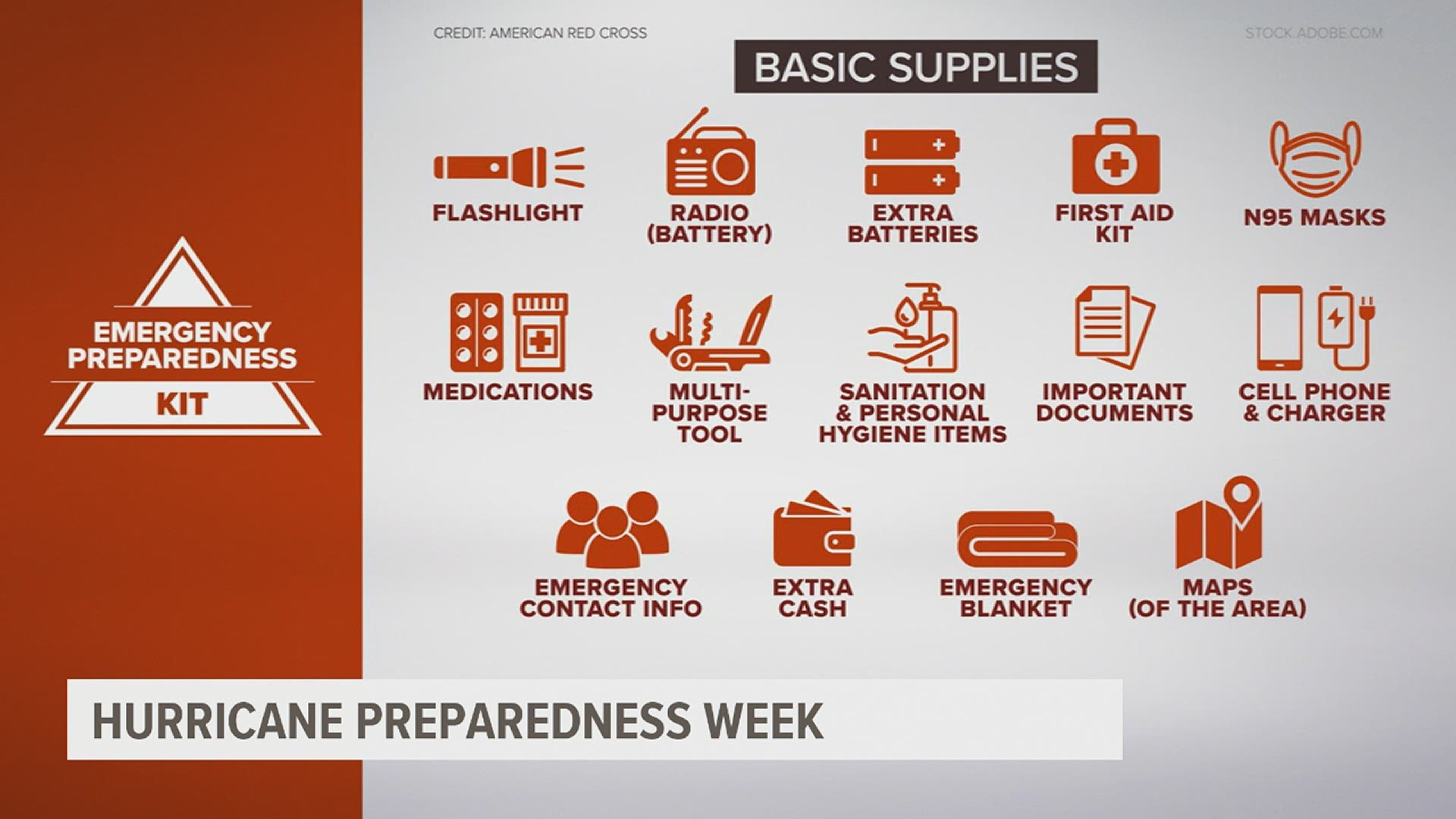YORK, Pa. — This week is Hurricane Preparedness Week and, while our area does not directly border the coast, it can still feel the effects of tropical systems as they make their way inland.
One of the first things you should do to prepare for a tropical system or any type of storm is be aware of your surroundings, according to National Hurricane Director Ken Graham.
“Are you along a river or a creek or some terraneous area where you’re in a low lying area... you’ve gotta prepare for the flooding,” Graham tells Fox43. “Looking around your house, look at the trees. Are there trees that may be leaning or trees that may be vulnerable that could topple over?”
It’s also important to review your insurance information, especially if you are in a flood zone, to make sure you have proper coverage.
Something that the whole family can help be a part of is making a plan in case there is bad weather. Find where the safest place is in your home and make an emergency kit you can keep there in case you need it. Make sure you put water and non-perishable foods in your emergency kit. Other helpful items include batteries, a flashlight, a weather radio, cash, and anything else you may need.


When a storm is forecast to affect your area, Graham stresses that it’s important to follow the forecast, which can change, and keep in mind which impacts are going to affect your area.
“Keep getting those updates, listen for those impacts, it’s not about the track. You have to think of these things as these big blobs of impacts.”
This year's hurricane season comes on the heels of a record-breaking 2020 with 30 named storms, including Hurricane Isaias. Isaias caused widespread wind damage and flooding across eastern Pennsylvania and up the east coast as it moved inland. Two people from the commonwealth died from flooding.
So far, forecasters do not expect this year to be as busy as last year.
Dr. Michael Mann, a professor of atmospheric science at Penn State University, says the upcoming season could have considerably less activity than last year.
“Most likely about 12 named storms, a little bit above the long term average,” Mann tells Fox43. “With an uncertainty range anywhere from maybe 9 to 15 named storms.”
The contributing factors that led to this forecast included warm ocean temperatures (though cooler than last year), a neutral ENSO cycle, and lower wind shear in the tropical Atlantic.
Mann also points out that residents should continue to monitor storms for flooding and that heavier rainfall from tropical systems is likely to increase as our climate warms.
The National Hurricane Center will release their official forecast on May 20th.
No matter how many storms form, it only takes one to make a big impact on an area.

